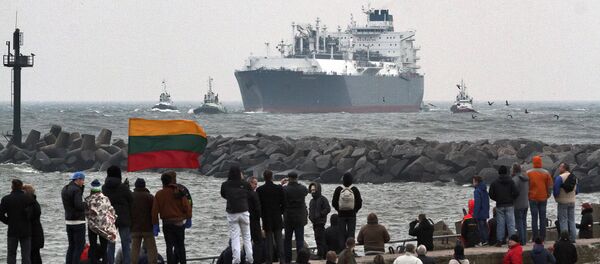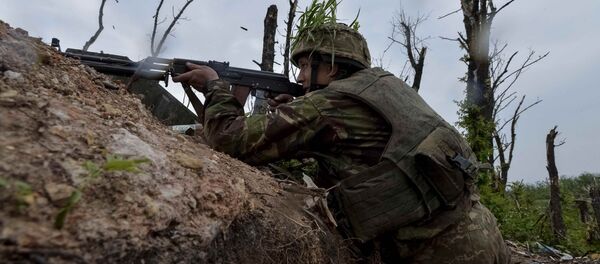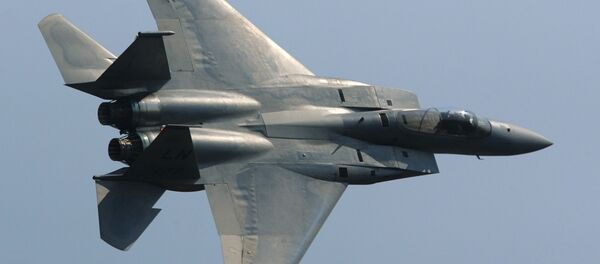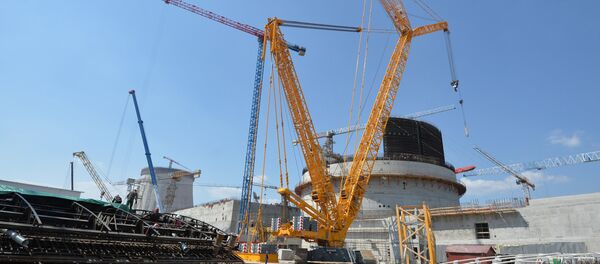Over the last few days, Lithuania’s have politicians managed to stand out even in this very competitive market. It’s no wonder the Russian diplomats had to walk out of the hall during the speech to the UN’s General Assembly by Lithuania’s president Dalia Gribauskaite. In her speech, she accused Russia of abusing its veto power at the UN and “invading” Georgia and Ukraine.
The President’s Short Memory
So, just like his president, Lithuania’s defense minister Raimundas Karoblis did not just happily survive the Soviet Union and the much-feared Russian military exercise Zapad-2017 which ended on September 24, 2017. Just like his ex-Soviet and now anti-Soviet president, Mr. Karoblis continued to make alarmist statements even after those dangerous periods of his life.
Post-Factum Fears of the Minister
After the Zapad’s mock battles in Belarus ended, Minister Karoblis continued to beat the drums, even though, contrary to the expectations of the NATO countries’ media, less than 13,000 Russian and Belarusian troops during their training did not attack Poland, Finland, or even the Baltic states for that matter. Several days after Zapad-2017 ended, Mr. Karoblis revealed to the world how close the universe was to a disaster. Not only did “one hundred thousand” Russian troops participate in the exercise (we had already heard this lie before the drills from president Gribauskaite’s speech at the UN), but the whole drill was a preparation for an attack against the defenseless (albeit expanding) West.
“The most important detail about this exercise was Russia’s simulated attack against all the Baltic states,” Karbolis said at a conference in the end of September. He also added that Russian troops imitated the use of conventional weapons in a conflict with technologically developed countries, and that means “they [Russians] were preparing for a war with NATO countries.”
Who Threatens Whom?
This indeed would have been most unfortunate, if Russia’s exercises were not a response to some much more hostile attitude from those “technologically developed countries.” The data from NATO’s own information resources indicates that in the last year alone NATO and its allies conducted about 80 military exercises near Russia’s border, with 120,000 troops participating and the government officials of those countries calling Russia “a hostile nation.” But these facts are obviously not considered by Mr. Karbolis to be worthy of even a mention.
Now, after the end of the exercise, Poland is intact, no “aggression by mistake,” which Mr. Karbolis had anticipated, ever happened. But he does not apologize, he makes the same statements as before. In these unchangeable opinions, Mr. Karbolis is supported by none other than the commander of US troops in Europe, general Ben Hodges. By saying that Russia was “equal” to NATO militarily, this American general, perhaps unwittingly, leads us to believe in NATO’s ineffective use of public money.
The pro-European Union EU-Observer Internet resource quotes a representative of Stockholm International Institute for Peace Research (Sipri) Siemon Wezeman as saying that “Russia’s defense spending in 2016 was only 27 percent of the combined total of European NATO members.”
Misuse of Public Money
So, if we believe general Hodges, NATO’s European member-states simply squander the money which their nations allocated for their defense. Otherwise, how can Russia keep its military capability on the par with NATO for an amount of money which is at least four times smaller? (In this equation, we have to ascribe “neutrality” to Americans and discount the military potential of the United States, which now keeps not only dozens of bases in Germany and former Yugoslavia but also a whole tank brigade of 3,500 men in Poland.)
So, how can the Lithuanian officials be so ineffective in their government-financed defense projects? Probably, the answer is to be found in corruption?
Some Very Non-Russian Corruption
For decades, the Lithuanian authorities have called their corruption a natural byproduct of Lithuania’s membership in the Soviet Union and subsequent ties to Russia in 1940-1991. But how come corruption is evident even in those projects of the Lithuanian government which are aimed at getting rid of “Russian influence” in all spheres of the Baltic nation’s life?
Here is a good example. Lithuania was the first of the Baltic nations to declare itself no longer dependent on gas deliveries from the Russian energy giant Gazprom. Back in 2014, president Dalia Gribauskaite welcomed, with much fanfare, the huge vessel named Independence in the Lithuanian port of Klaipeda. The vessel was described by the New York Times as “a floating factory for converting liquefied natural gas into the burnable variety.” The NYT praised it as “an example of how to break Russia’s grip on energy,” saying that Independence “represents a direct challenge to the Russian way of doing business.”
A challenge it was indeed since now the Lithuanian investigative journalists are denouncing the project with the South Korean-owned Independence as a huge corruption scheme done via offshore bank accounts abroad. So, if the New York Times considers this project “a challenge to the Russian way of doing business,” then the Russian way is indeed clean.
“This vessel converting the Norwegian liquefied natural gas was supposed to serve the energy needs of not just Lithuania, but also of Latvia and Estonia,” explained Aurimas Drizius, the chief editor of Laisvas Laikrastis, a Lithuanian media outlet specializing in anti-corruption investigations in an interview to Vesti-24. “So, why do the Latvians and Estonians refuse to buy gas from it? Because it is twice as expensive as the Russian gas. But it was not supposed to be so! Someone just got Lithuania involved in this project, got the millions needed for the lease of the ship and later made off with the money. The whole affair was done by payments via offshore bank accounts somewhere on Bermuda islands.”
Despite the fact that Lithuanian businesses continue to prefer buying Russian gas, and the Latvian/Estonian businesses categorically refuted the “Independence” project as financially non-viable, the “Klaipeda variant” continues to be touted in the mainstream Western mass media as a way out of “energy dependence on Russia.”
Again, there is a talk about a “revolutionary liberation” from Russian gas, even though this revolution was supposed to happen back in 2014, when the Norwegian liquefied gas arrived in Klaipeda, for the first and last time.
With another warm welcome from Miss President, there is no reason to believe that Ms. Gribauskaite won’t crack on the US shale gas the same joke she did on the Norwegian gas and on the Soviet Communist Party’s academy. That joke is cooing her goodbye at the moment when the partner faces the first problems with the project she herself had ardently supported – some years before.
The views expressed in this article are solely those of the author and do not necessarily reflect the official position of Sputnik.







